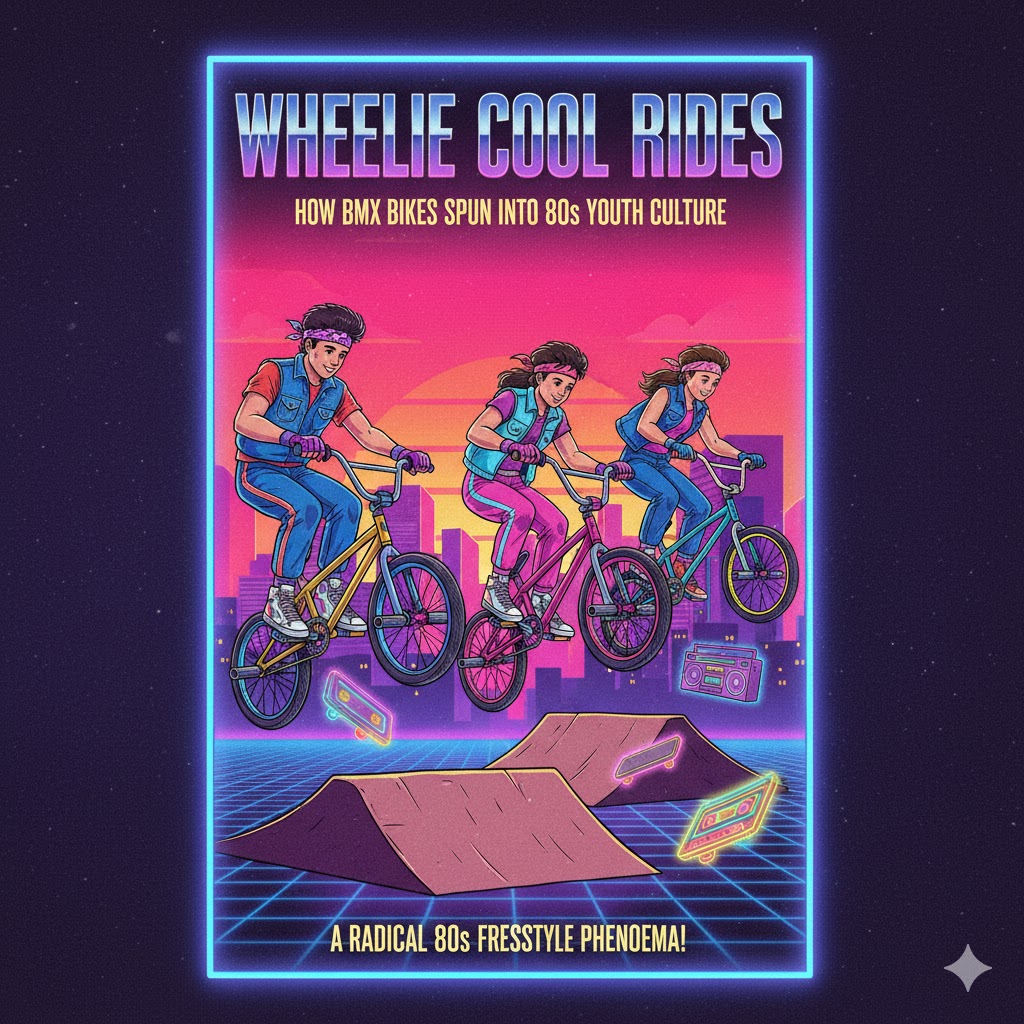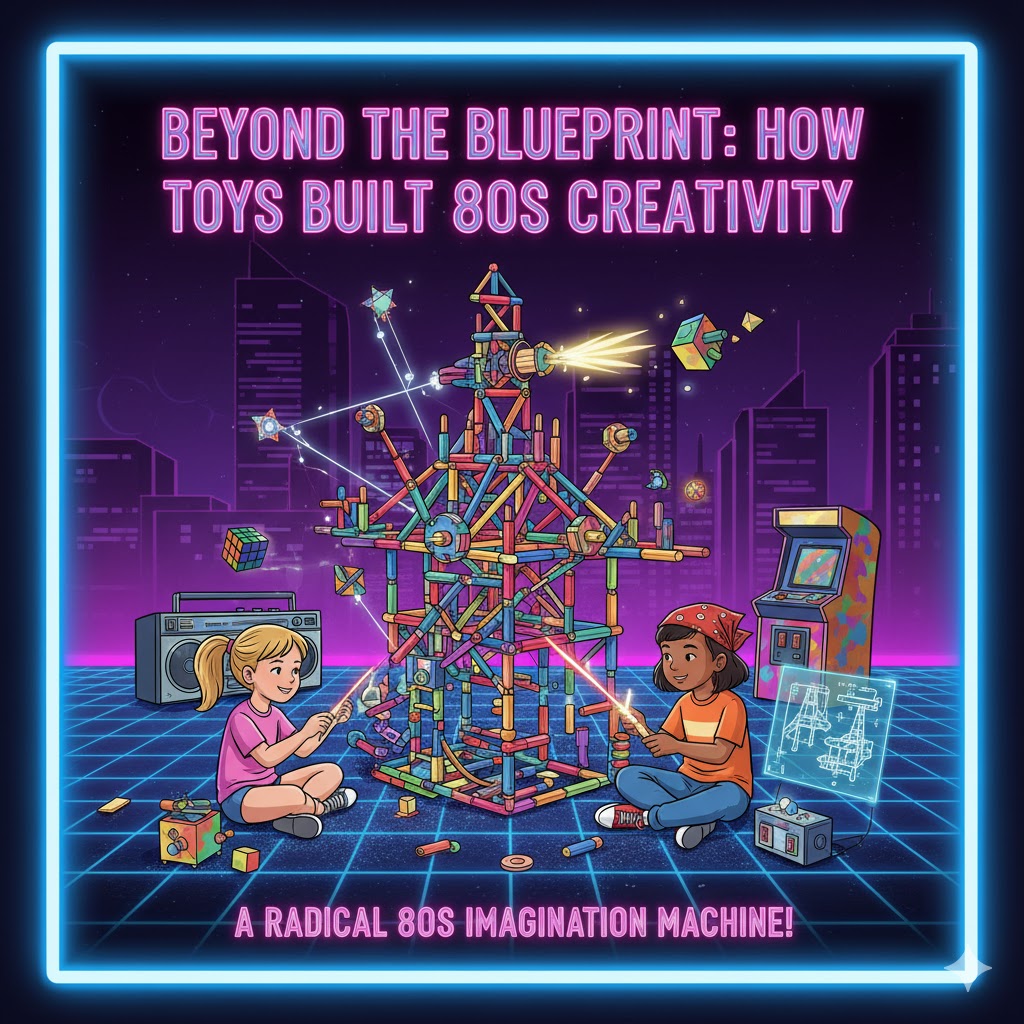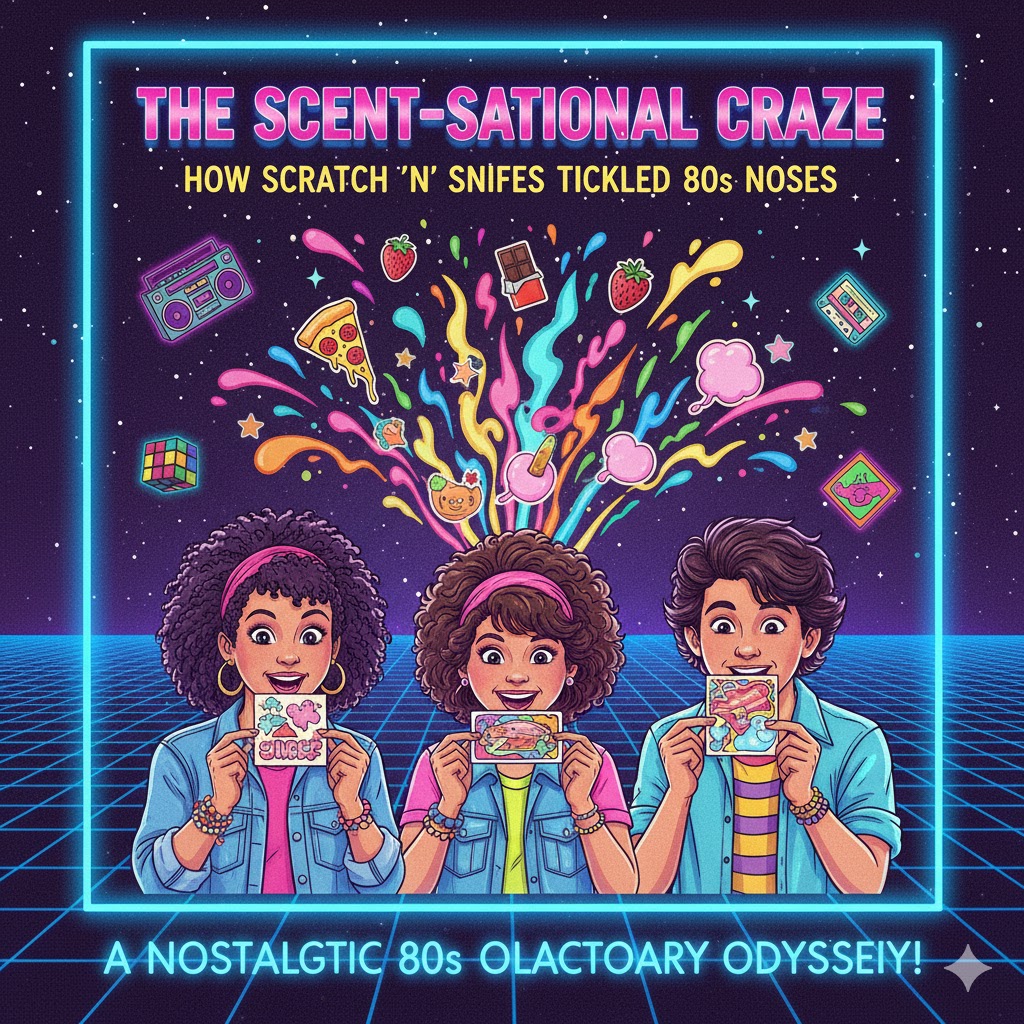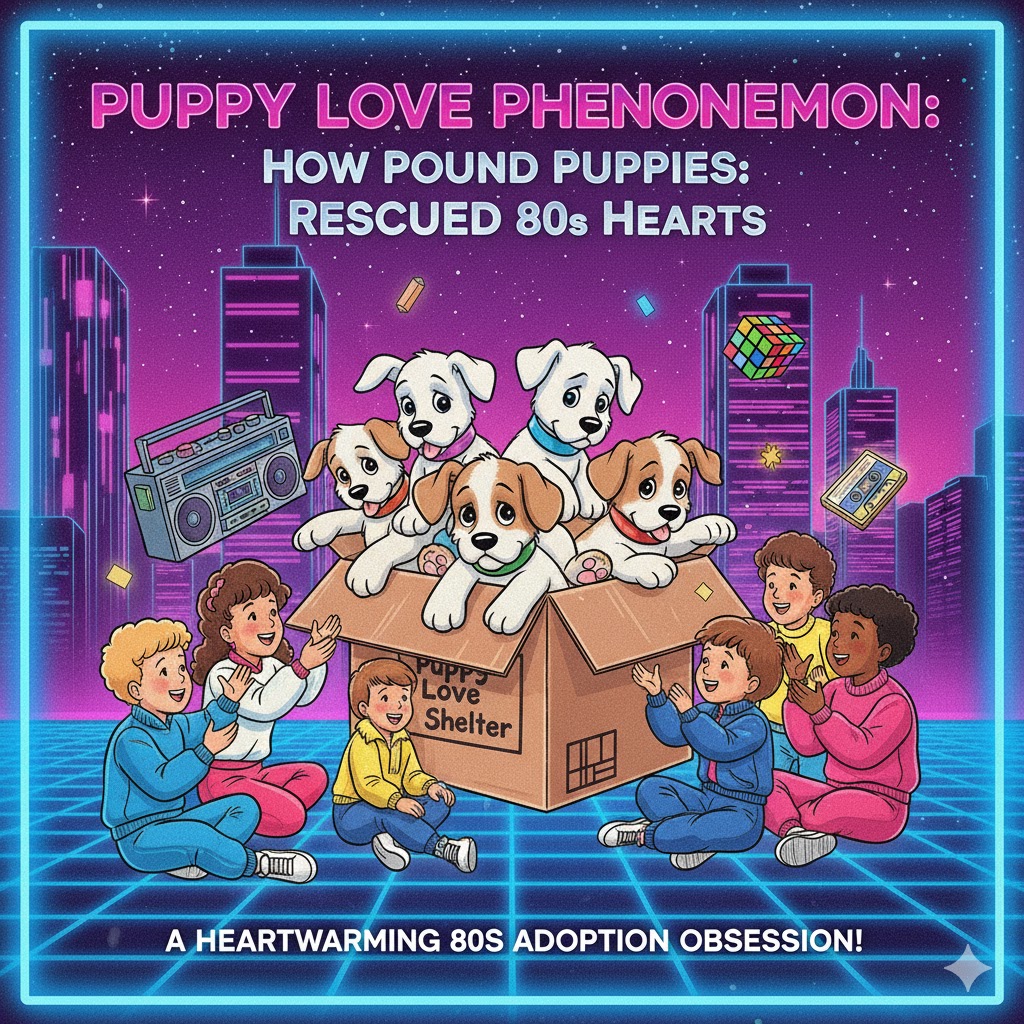 The roar of small engines wasn’t needed to fuel the excitement of 1980s streets, parks, and driveways—BMX bikes provided all the adrenaline, style, and rebellion young people could handle. Bursting from the Southern California dirt tracks of the late 1970s, BMX bikes exploded into mainstream culture during the 1980s, transforming childhood recreation, fashion, media, and even music. What began as a niche sport rapidly evolved into a global phenomenon, influencing toys, advertising, television, and the burgeoning extreme sports scene. BMX bikes became more than just a way to get from point A to point B—they were an emblem of freedom, skill, and the fearless energy of a generation.
The roar of small engines wasn’t needed to fuel the excitement of 1980s streets, parks, and driveways—BMX bikes provided all the adrenaline, style, and rebellion young people could handle. Bursting from the Southern California dirt tracks of the late 1970s, BMX bikes exploded into mainstream culture during the 1980s, transforming childhood recreation, fashion, media, and even music. What began as a niche sport rapidly evolved into a global phenomenon, influencing toys, advertising, television, and the burgeoning extreme sports scene. BMX bikes became more than just a way to get from point A to point B—they were an emblem of freedom, skill, and the fearless energy of a generation.
BMX, short for Bicycle Motocross, originated as kids emulated their motocross heroes on smaller, more maneuverable bicycles. Early riders modified their bikes with knobby tires, reinforced frames, and custom handlebars to tackle dirt tracks, jumps, and racing circuits. By the late 1970s, organized competitions began forming, giving BMX an official structure while retaining its DIY, rebellious roots. The sport’s rapid growth coincided perfectly with the 1980s cultural landscape, a decade that celebrated individuality, extreme experiences, and the thrill of pushing limits. Children and teenagers quickly embraced BMX as a way to perform stunts, compete with friends, and express personality through bike modifications and flashy clothing.
Television and film played a significant role in popularizing BMX in the 1980s. Shows like Rad and E.T. the Extra-Terrestrial featured kids on BMX bikes, highlighting their role as symbols of adventure, ingenuity, and youthful defiance. Movies depicted BMX riders performing daring tricks, weaving through suburban streets, and racing across parks, which inspired countless viewers to adopt the bikes themselves. Meanwhile, television programs and commercials targeting children and teens often showcased BMX bikes as aspirational items, linking them to independence, skill, and social status. Owning a BMX bike became more than a recreational choice—it signified coolness, daring, and membership in a community of like-minded youth.
The design of BMX bikes themselves contributed to their cultural impact. Lightweight steel frames, oversized handlebars, and sturdy wheels allowed riders to perform jumps, spins, and wheelies that were impossible on conventional bicycles. Their durability encouraged experimentation and risk-taking, giving children a physical outlet for creativity and athleticism. Unlike traditional bicycles, BMX bikes could survive crashes, jumps, and rough terrain, which made them perfect for the playgrounds, empty lots, and suburban streets of the 1980s. Riders often customized their bikes with bright colors, chrome parts, and stickers, turning each machine into a personal statement. The aesthetic of BMX culture—bold, flashy, and individualistic—mirrored the decade’s broader embrace of color, style, and self-expression.
BMX bikes also had a profound influence on the toy and merchandising industries of the 1980s. Popular brands like Mongoose, Redline, and Haro capitalized on the craze, producing specialized BMX models that were sold nationwide. Toy lines such as Hot Wheels and action figures began incorporating BMX bikes into their products, allowing children to replicate stunts and competitions at a miniature scale. Retail stores dedicated entire sections to BMX bikes, helmets, pads, and accessories, turning the bicycles into objects of desire and status symbols. This commercialization reinforced BMX’s visibility in everyday life, embedding the sport into both the physical and imaginative play of children across the country.
BMX culture extended beyond bikes and stunts, influencing fashion and lifestyle trends. Riders often wore baggy pants, bright t-shirts, and high-top sneakers, styles that aligned closely with skateboarding and street culture. Protective gear, such as helmets and pads, was also brightly colored and decorated, reflecting the performative and visually striking nature of BMX activity. The combination of athleticism, fashion, and individual flair made BMX a lifestyle choice as much as a recreational pursuit, one that intersected with other youth movements and contributed to the visual and social landscape of the 1980s.
Music also intersected with BMX culture in notable ways. Punk rock, early hip-hop, and emerging pop styles frequently formed the soundtrack for BMX videos, advertisements, and films. The fast-paced energy of the music mirrored the intensity and dynamism of BMX riding, reinforcing the sense that the sport was edgy, contemporary, and in tune with youth sensibilities. BMX competitions and exhibitions often featured music-heavy presentations, turning races and stunt demonstrations into cultural events where sport, style, and sound converged. This synergy helped cement BMX’s position not just as a sport but as a cultural phenomenon.
Competitions played a key role in establishing BMX as both a sport and a cultural movement. By the early 1980s, national and international BMX races were commonplace, attracting professional riders and drawing large crowds. Televised events and coverage in magazines like BMX Plus! and Bicycle Motocross Action provided aspirational models for young riders, offering step-by-step guides for tricks, customization tips, and profiles of standout athletes. The competitive aspect fueled innovation, encouraging riders to attempt more daring tricks and further pushing the boundaries of what BMX bikes could achieve. Fans and participants alike were drawn not only to the thrill of racing but to the subculture surrounding the sport, including its fashion, music, and community values.
The social aspect of BMX riding cannot be understated. Empty lots, neighborhood streets, and local dirt tracks became gathering spots for children and teens, who shared tips, organized impromptu competitions, and learned from each other’s techniques. BMX riding fostered camaraderie, collaboration, and a sense of belonging among participants, creating micro-communities within towns and cities across America. It also provided a healthy outlet for energy, promoting physical fitness, coordination, and perseverance. The visibility and popularity of BMX bikes in these social spaces helped reinforce their status as both a practical and aspirational item in the 1980s cultural landscape.
BMX also influenced video games and toy media, bridging digital and physical play. Titles like Excitebike for the Nintendo Entertainment System and later BMX-themed arcade games drew inspiration from the tricks, races, and stunts that defined the sport. These games allowed players to simulate BMX experiences, further amplifying the cultural footprint of the bikes. The intersection of real-world BMX riding and digital representation helped solidify the sport’s presence across multiple domains of 1980s childhood entertainment. Children could race in the streets by day and in the arcades by night, keeping BMX culture alive in every corner of their lives.
The influence of BMX bikes on 1980s pop culture was not limited to entertainment and fashion—it also left a lasting impression on attitudes toward physicality, risk, and innovation. Riding a BMX encouraged a mindset of experimentation, resilience, and personal challenge. Young riders learned to assess obstacles, anticipate movements, and handle failure constructively after a crash or failed trick. These lessons extended beyond sport, shaping problem-solving skills, creativity, and confidence. BMX riding celebrated individuality and courage, traits that resonated with the 1980s cultural emphasis on self-expression, boldness, and youth empowerment.
BMX’s legacy continues to this day, but its roots in 1980s pop culture remain foundational. The bikes, tricks, and imagery of that decade influenced later extreme sports, including skateboarding, freestyle mountain biking, and even snowboarding. Fashion, music, and media from the 1980s drew on BMX aesthetics, keeping the spirit of the sport alive long after its initial boom. For those who grew up during the decade, BMX bikes are more than recreational tools—they are symbols of freedom, creativity, and the bold, energetic ethos of a transformative era.
The 1980s saw BMX evolve from a niche hobby into a mainstream cultural phenomenon. Its impact on youth culture, fashion, media, and social interaction was profound, shaping the way children played, expressed themselves, and engaged with their communities. BMX bikes provided a platform for adventure, competition, and self-expression, merging athleticism, artistry, and rebellion into a single cultural force. They represented movement—both literal and figurative—capturing the imagination and energy of a generation that embraced the extraordinary, the daring, and the playful.
Ultimately, BMX bikes in the 1980s were more than machines—they were cultural icons. They redefined what it meant to play, to compete, and to express identity. Through television, film, music, fashion, and social interaction, BMX became a symbol of a decade that celebrated boldness, individuality, and youth-driven creativity. The bikes themselves, with their sturdy frames, oversized handlebars, and colorful designs, became recognizable emblems of the era. Every jump, trick, and race contributed to a shared memory that continues to evoke the excitement, energy, and style of the 1980s.
For anyone who recalls racing down the driveway, performing jumps at the local park, or trading customization tips with friends, BMX bikes remain a powerful reminder of the decade’s vibrancy. They represent freedom, ingenuity, and the fearless curiosity that defined 1980s childhoods. By merging sport, style, and spectacle, BMX bikes left a lasting mark on popular culture, proving that even a simple two-wheeled machine could become a vehicle for expression, community, and enduring nostalgia.



